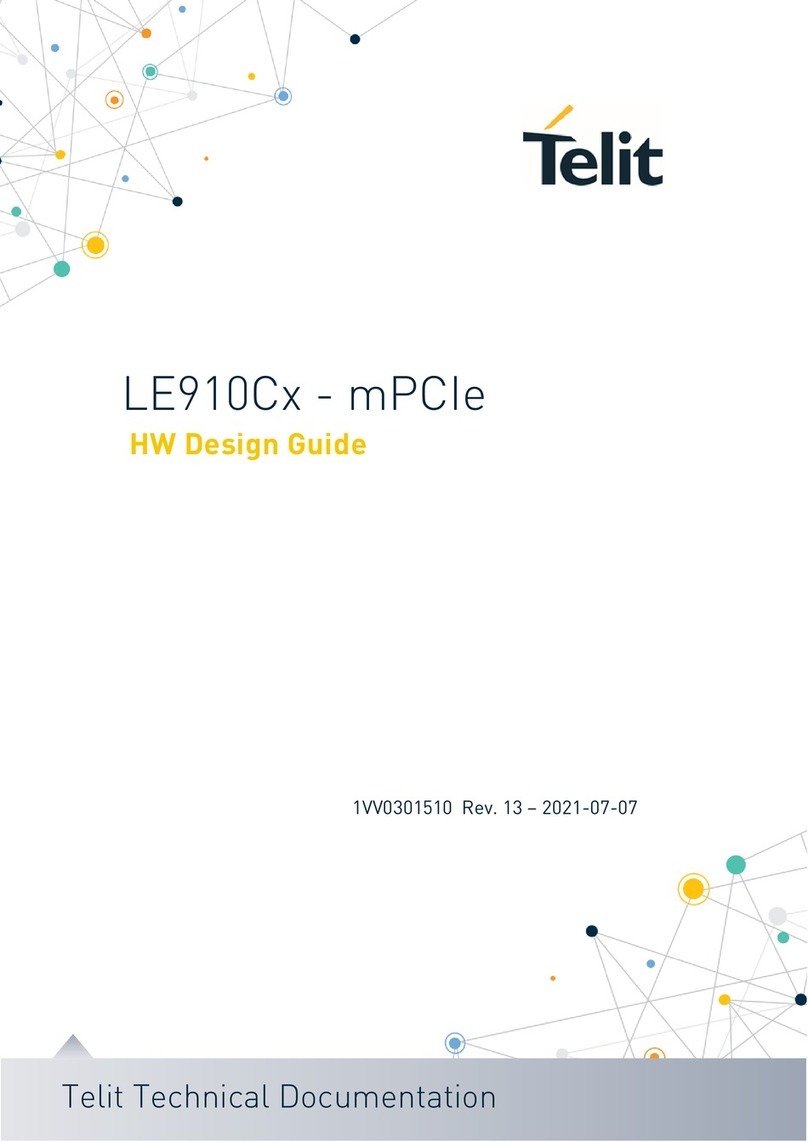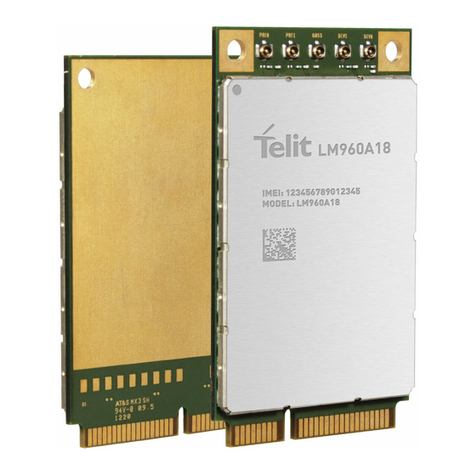
ME910C1 mPCIe HW Design Guide
1VV0301642 Rev. 2 Page 8of 56 2022-01-14
2. GENERAL PRODUCT DESCRIPTION
Overview
This document presents possible and recommended hardware solutions useful for
developing a product with the Telit ME910X1-mPCIe module.
ME910X1-mPCIe is Telit platform for Mini PCIe applications, such as M2M applications,
table PC, based on the following technologies:
•LTE / WCDMA networks for data communication
•Designed for industrial grade quality
In its most basic use case, the ME910X1-mPCIe can be applied as a wireless
communication front-end for mobile products, offering mobile communication features
to an external host CPU through its rich interfaces. ME910X1-mPCIe can further support
customers’ software applications and security features. ME910X1-mPCIe provides a
software application development environment with sufficient system resources to
create rich on-board applications. Thanks to a dedicated application processor and
embedded security resources, product developers and manufacturers can create
products that guarantee fraud prevention and tamper evidence without extra effort for
additional security precautions.
ME910X1-mPCIe hardware is available in different board and band variants as listed in
the chapter §2.2 Product Variants and Frequency Bands
Product Variants and Frequency Bands
ME910X1 modules bands combinations are listed below:
2, 4, 12 North America
2, 3, 5, 8 1, 3, 5, 8, 18, 19, 26, 28 World Wide
2, 3, 5, 8 B1, B2, B3, B4, B5, B8, B12, B13,
B18, B19, B20, B25, B26, B27,
World Wide
Table 1 Product Variants and Frequency Bands
Refer to Chapter §14 Reference Table of RF Bands Characteristics for details information
about frequencies and bands.































